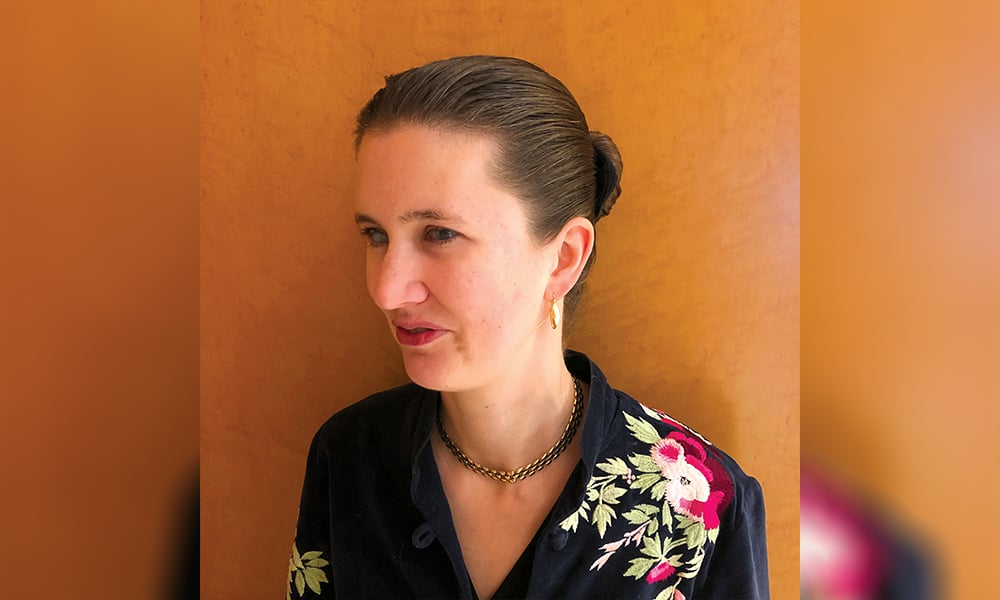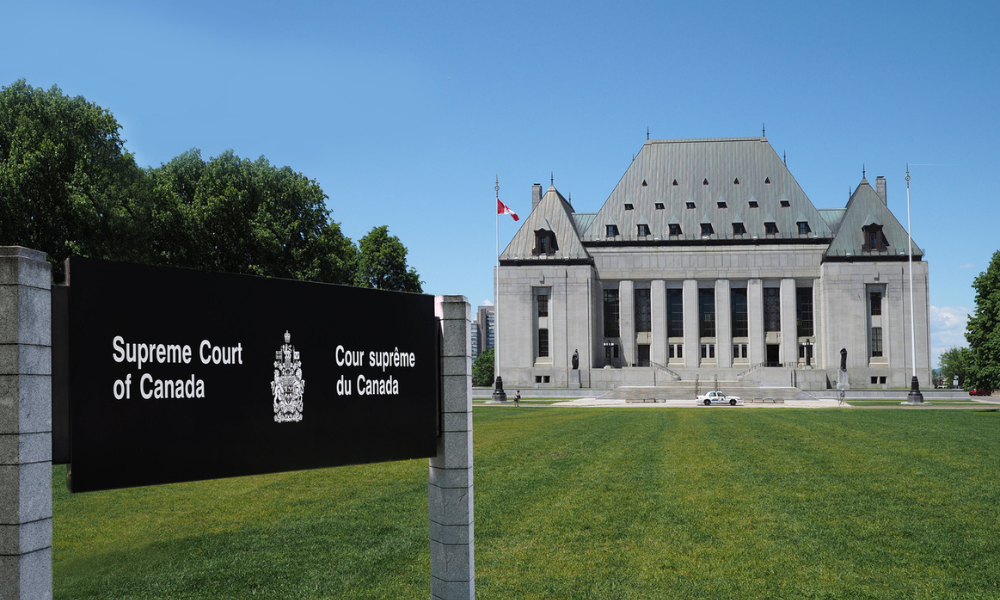Federal Court case challenges the constitutionality of Safe Third Country Agreement

A case challenging the constitutionality of the Safe Third Country Agreement is again before the courts amid ongoing concern over the United States’ policies on immigration.
The Federal Court of Canada, which heard the case in November, must now decide if the STCA violates the Charter of Rights and Freedoms — specifically s. 7, the right to life, liberty and security, and s. 15, the right to equality — when Canada sends asylum-seekers back to the United States.
“As a result of the STCA, individuals seeking Canada’s protection are going to be turned back at the border at a port of entry, handed directly over to the United States Customs and Border Protection and, in many cases, put right into the U.S. detention system, often without any ability to access legal counsel or evidence,” says Heather Neufeld, an immigration and refugee lawyer both in Canada and in California, who is also one of the lawyers involved in the STCA legal challenge.
“This whole idea that these people have access to an equal system in the U.S. is a fallacy given the current U.S. asylum climate.”
The STCA was signed by Canada and the U.S. in 2002 and came into effect in 2004. The agreement aims to “manage the flow of refugee claimants” and assumes both countries offer substantial refugee protections. Unless they qualify for a limited number of exceptions — such as already having close family in Canada — asylum seekers can’t arrive in the U.S. and then file claims in Canada or vice versa. The agreement only applies at formal border crossings.
This is the second time the Federal Court has been asked to weigh in on the agreement — in 2007, the court ruled the designation of the U.S. as a safe country was unreasonable due to its refugee record at the time. The decision was overturned on appeal for technical reasons.
Jacqueline Bonisteel, an associate with Caruso Guberman Appleby Corporate Immigration Law Firm, says she believes a solid case was put together.
“It’s certainly something immigration lawyers are paying close attention to, and we are seeing clients in our practices who are being affected by this,” Bonisteel says.
There is a consensus that there are now legitimate grounds to say the United States under President Donald Trump no longer meets the standard of a safe country with practices such as deporting people back to places where they’re in danger of being tortured or killed, as well as the controversial separation of family members at the border. The country recently started turning people back at the Mexican border to wait for their asylum claims to be heard despite having genuine and legitimate fear for their lives, which Bonisteel says likely does not stand up to constitutional muster.
“There’s crazy stuff going on down there right now. It’s amazing what’s actually been implemented — some things I never thought I’d see, they’re going through for now.”
The fact that the STCA does not address irregular border crossings has been identified by some as a loophole. Walking across the border at an unmonitored location should be illegal, says Vanessa Routley, an immigration lawyer in Winnipeg. She spends her days trying to get people to Canada in official ways.
“It’s very hard to persuade clients that’s the right way to do it when all of their anecdotal evidence is people they know who entered on asylum claims and got access to the job market and access to public services,” Routley says. “It’s a really difficult case to make because if they walk across the border it’s a sure thing — and I can’t promise that.
“It’s an extremely unpopular opinion; but after spending so much time and energy to bring people into Canada legally, I just don’t think it’s fair or appropriate that the loophole exists. We all benefit by entering people through established streaming systems rather than asylum.”
But Bonisteel says it comes back to Canada being a signatory — along with the U.S. — to the International Refugee Convention, which “states clearly if someone on Canadian soil makes a claim, we have to hear that claim.”
“When politicians talk about closing that loophole, I always want to drill down and understand what they actually mean by that,” she says. “I personally don’t see a legal way to ‘close that loophole.’”
Neufeld says applying the agreement to the entire border would mean turning back most asylum seekers, effectively blocking them from their right to seek asylum.
“Canada would be complicit in handing those individuals back to a system where we know we are indirectly contributing to their return to the country where they risk persecution,” Neufeld says. “What makes sense is for all asylum seekers to be able to come to ports of entry where they are fully examined and vetted and any security screening that needs to happen can happen and they’re then able to enter Canada in an organized way and make their refugee claim.”
Prime Minister Justin Trudeau made comments about “modernizing” the agreement in his October election platform, but no details were offered. However, an amendment to the Immigration and Refugee Protection Act — that was included in the 2019 federal budget bill — states that anyone who wants to make a refugee claim but has already commenced one in one of the so-called “Five Eyes” countries, which includes the U.S., will no longer be able to access a full refugee claim process before the Immigration and Refugee Board. Instead, they’re being directed to a more summary pre-removal risk assessment process that has fewer procedural safeguards, no in-person witnesses and no provision for designated representatives for minor children or individuals with mental health challenges.
“The whole reason for this process is the government’s idea the U.S. is equally safe for asylum seekers and, therefore, if people have commenced a claim, they are essentially ‘asylum shopping’ by now coming to Canada — that’s the term they used,” Neufeld says.
“That might give us some clue as to what Trudeau means when he talks about modernizing the system,” Bonisteel says, noting that the change is so recent it’s unclear how it’s going to play out as the first cases are just getting hearings now. But refugee lawyers, herself included, are concerned.
Neufeld argues that the government is not considering the fact people may commence a claim in the U.S. and then things change — laws change or decisions come down or their legal counsel advises the claim is not likely to succeed. Another reality is they might be in detention, eventually get out on bond and come to Canada in hopes of a fairer process.
“There are lots of cases where individuals genuinely need Canada’s protection, and the fact they have started a process in the U.S. that they have left does not indicate they’re not afraid — it actually might indicate they are extremely afraid,” Neufeld says.
She provides consultation to U.S. colleagues to help determine claimants’ chances of success in Canada, but she says many of the lawyers south of the border don’t have a “very nuanced understanding” of the system here other than it’s more fair, welcoming and humanitarian than theirs. She calls for more education and collaboration between the immigration bars in both countries, as both sides have the interests of their refugee clients at heart.
“There’s definitely concern on the part of U.S. immigration lawyers — can people access the Canadian system? What kinds of danger are they being put in when they enter irregularly?” Neufeld says, noting that there are reports of people suffering from frostbite, for example.
“That wouldn’t be happening if they were coming to a formal port of entry.”
STCA Timeline
2002 - STCA signed by Canada and the United States
2004 - STCA comes into effect
2007 - First Federal Court of Canada challenge to constitutionality of the agreement, court rules designation of U.S. as safe is unreasonable, decision overturned on appeal for technical reasons
2016 - Higher numbers of refugees coming into Canada at unofficial border crossings, Donald Trump elected president of the U.S.
2019 - Second Federal Court hearing begins, currently awaiting decision
Refugee claims by irregular border crossers, 2017-2019, StatsCan
Intake: 50,635
Accepted: 10,582
Rejected: 9,346
Abandoned: 782
Withdrawn & Other: 952
Total Finalized: 21,662
Pending: 28,973










